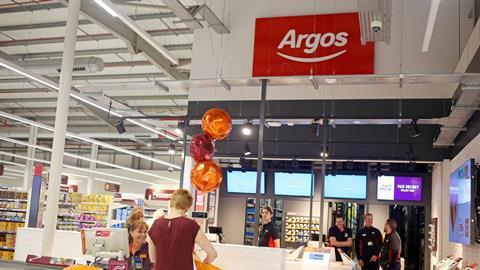Job losses are always sad news. And yesterday’s announcement from Sainsbury’s was no exception.
The retailer is consulting with 1,400 workers in its distribution network on plans to shutter two Argos depots by 2026, while spending £90m on automating its Daventry depot. This comes as part of a wider shakeup of its property portfolio, which includes the shuttering of its three remaining Habitat showrooms.
Sainsbury’s CEO Simon Roberts says the aim is to make the business more efficient by consolidating its five existing Sainsbury’s and Argos depots into three. That logic has been disputed by Unite, which represents affected Wincanton workers. Having vowed to pursue all avenues to preserve the roles, it told The Grocer there was no “economic justification” for the move.
Unfortunately, Roberts may disagree. He says the move will “allow us to reduce costs so we can invest where it will make the most impact for our customers”. All of which are key tenets of his ‘save to invest’ strategy, which has put a clear focus on streamlining the business and cutting operating costs, while improving the shopper experience.
That streamlining has inevitably led to staff cuts. Indeed, this is at least the fifth major swathe of cuts publicly announced since Roberts began implementing the plan. In March 2020, Sainsbury’s announced the closure of in-store deli counters alongside 420 Argos stores, putting as many as 4,000 roles at risk. A year later, it shed 500 roles across its HR, commercial, supply chain, tech and merchandising teams, as well as 650 in the closure of a fulfilment centre in Bromley-by-Bow (although Sainsbury’s aimed to redeploy “most” of the latter employees to nearby London stores).
Then, in March 2022, Retail Week reported a further 300 store support roles were to be cut under plans to outsource roles to Accenture. Since then, it has also been closing its in-store cafes – affecting as many as 2,000 staff – many of which have been replaced with Starbucks franchises.
These savings are arguably necessary given the challenges facing Sainsbury’s. While battling rampant energy costs and rising food inflation, it has needed to make shrewd investments to maintain its position in a competitive market.
That has included investing in staff: Sainsbury’s has spent £205m on pay hikes over the past year to keep up with industry-wide wage increases. Crucially, however, it’s been investing in price. Over the past two years, the retailer has ploughed £550m into price cuts to match Aldi and appeal to increasingly cost-conscious shoppers.
There are signs of the strategy starting to bear fruit. Sainsbury’s underlying pre-tax profits grew to £730m in the 12 months to March 2022, up 104% and 25% respectively on the two previous years. Argos was a particular, if not unexpected, high point of Sainsbury’s “record” Christmas results, with a resurgent 4.5% increase in sales across the third quarter of last year.
But as Roberts knows all too well, there’s no room for complacency in today’s market. And at a time when all of the supermarkets are looking for efficiencies, Sainsbury’s can’t afford to sit back. So don’t expect the ‘save to invest’ strategy to slow down anytime soon.




















No comments yet